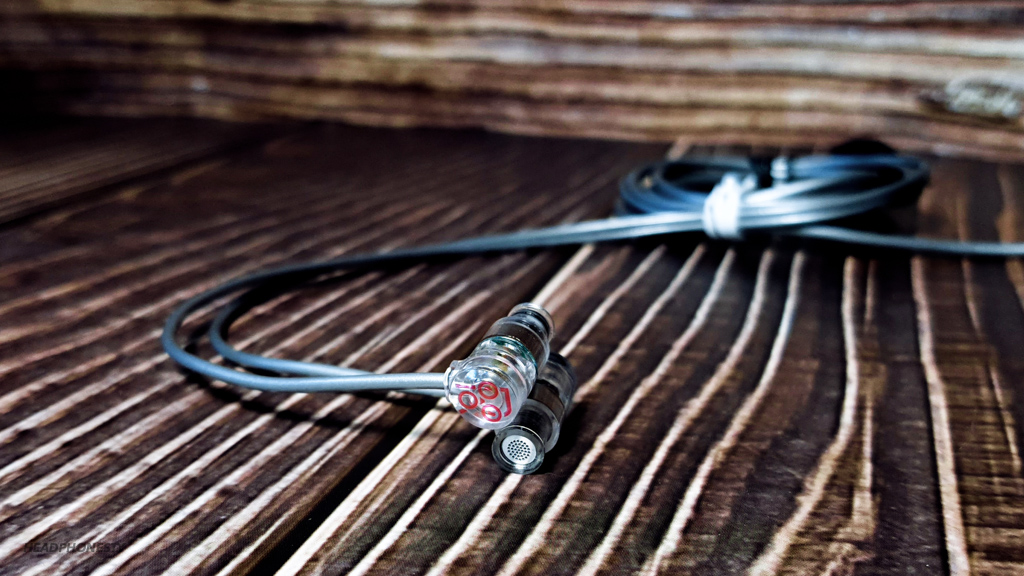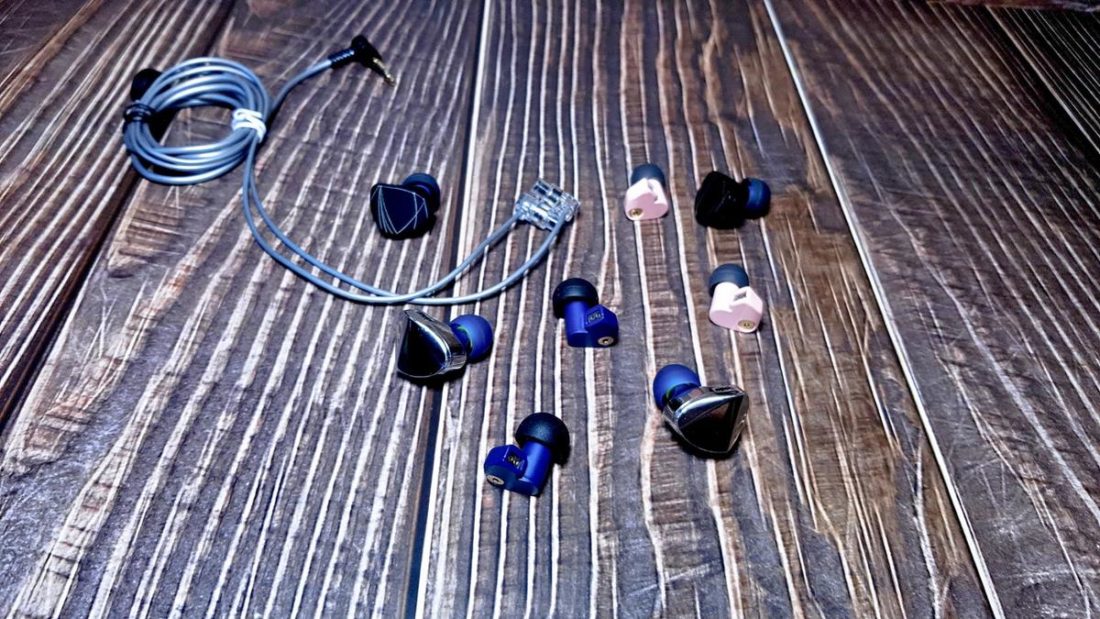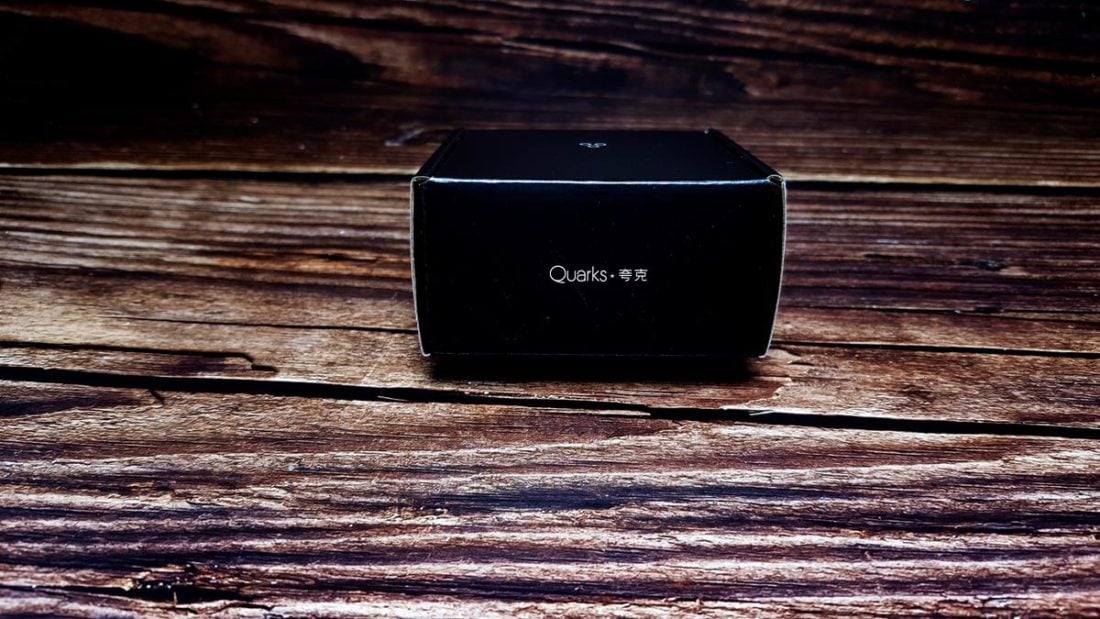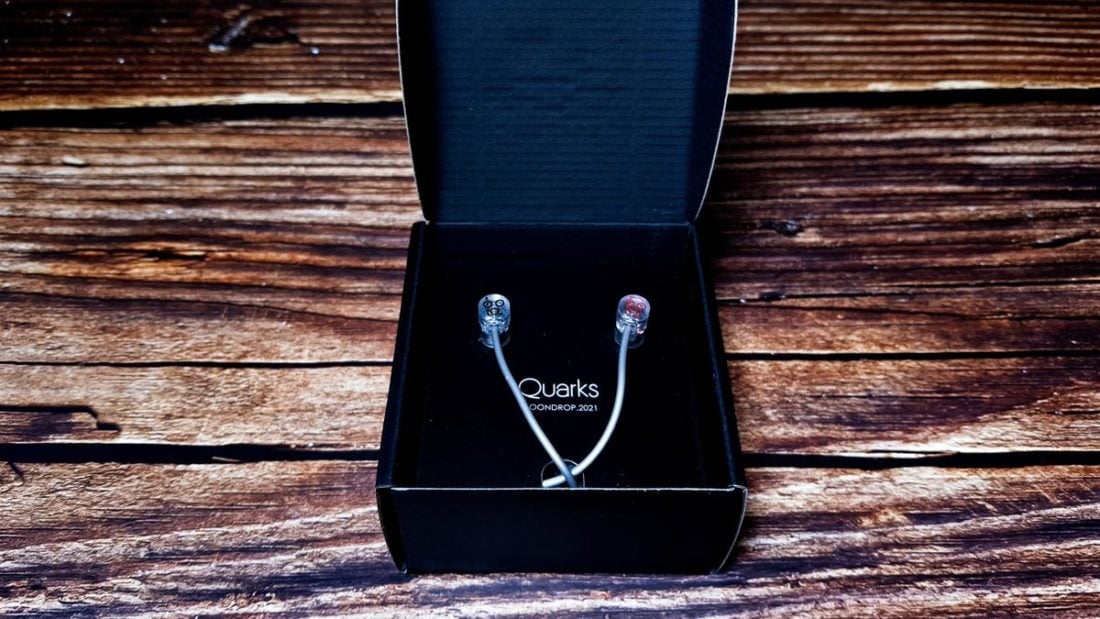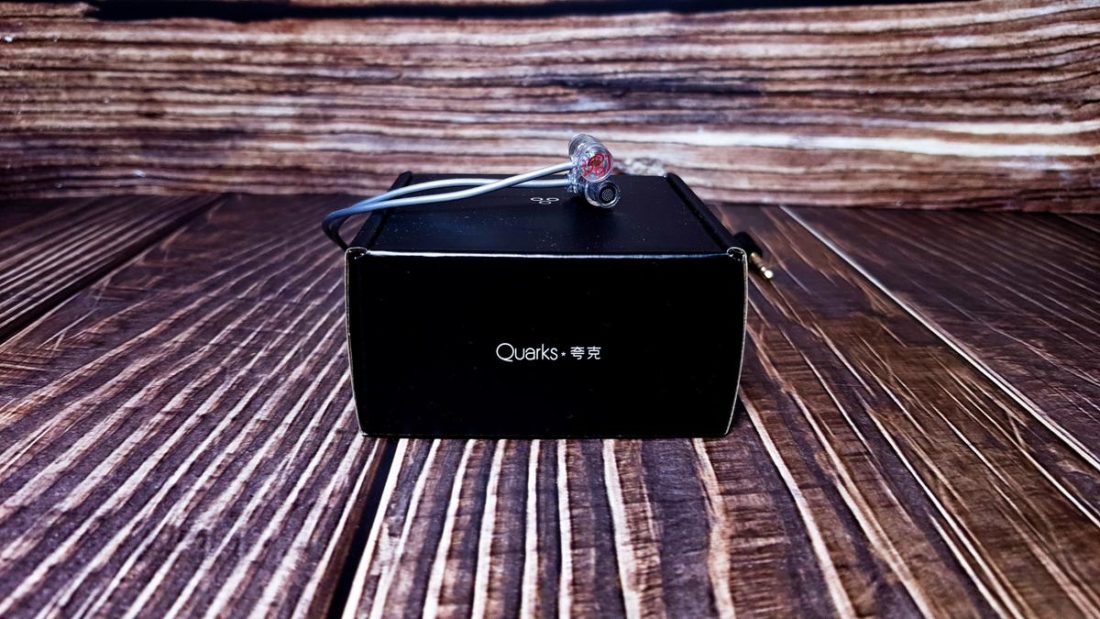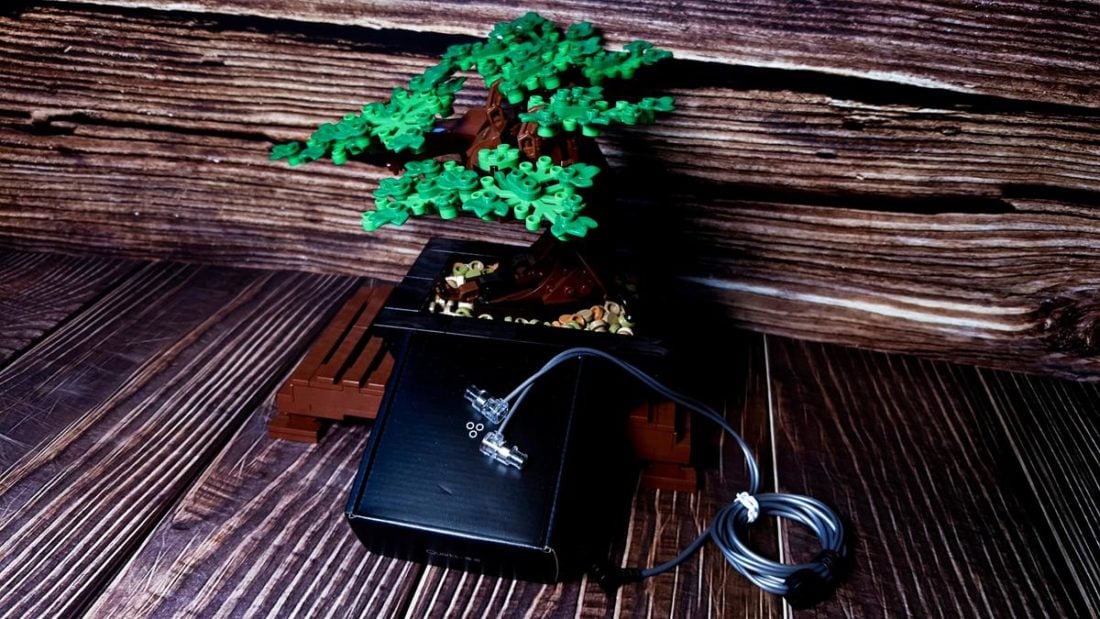A quark is the smallest subatomic particle currently known by humans. It is the “building block” for all other particles, and so quarks are often called the ‘fundamental constituents of matter’. Why did Moondrop name their new release “Quarks”? I suppose that this is Moondrop’s attempt at going back to the very basics with a pair of entry-level earphones. The Quarks are priced lower than the Moondrop SSR/SSP, the previously most affordable Moondrop earphones. Both the SSR and the SSP are loved by many because of their exceptional performance at an affordable price point. This raises a question in my mind: Is there a place for the Quarks in the market? Let’s find out.
About Moondrop
Moondrop may be a relatively young brand compared to other well-established companies, but as a Chi-Fi brand, they are one of the most experienced. The engineers in Moondrop started designing and producing IEMs and earbuds in 2014 before Moondrop was officially founded in 2015. Their first few popular models were all earbuds, namely the VX and the Liebesleid. Since then, Moondrop has launched great IEMs, many of which have been reviewed on Headphonesty, including the Kanas, the 1st gen Blessing, the Starfield, the SSR, the SSP, the Blessing 2, and the Aria 2.
Technical Specifications
Drivers: High performance 6mm micro-dynamic driver Impedance: 16 Ω Sensitivity: 116 dB/Vrms Frequency response: 20 – 20000 Hz THD: <1% @1k Hz
Packaging and Accessories
The Quarks come in a small black cardboard box, with the model logo on the front cover. On the back of the box, you find all the technical specifications. They are all written in Chinese, though, so if you are a non-Chinese speaker, you may be better off checking them out above. On the side of the box, the model name is written in both Chinese and English. Here are all the accessories provided with the Quarks. You get a carry bag, a guide, and 3 pairs of ear tips. At this ultra-budget price, I am more than satisfied that Moondrop has provided ear tips in multiple sizes.
Design and Comfort
The Quarks follow a bullet-design style instead of the more common over-ear wearing style of most audiophile IEMs. Usually, I prefer the over-ear style because bullet earphones often fail to stay in my ears properly and fall out after a while (looking at you, JVC FW01). This is not the case for the Quarks, as they are very lightweight and so they stay in my ears just fine. With the right choice of ear tips, the Quarks provide a decent amount of isolation. However, being a pair of single dynamic driver earphones, they do require vents for the drivers to function properly. While they don’t isolate as well as balanced armature earphones based such as the KBEAR Neon, the isolation is good enough for daily use. The Quarks do not have removable cables. Although that does not bother me too much, I would like to see an in-line microphone control.
Sound Analysis
I paired the KB EAR with my Mac, the Cowon Plenue D3, the iFi ZEN DAC, and my Luxury & Precision W1 to analyse the sound. Before making any judgement for the review, I burned in the Moondrop Quarks for about 100 hours. Why would you want to burn in a pair of earphones, you ask? Well, if that’s your question you must read about it right here. This is something that I always do to ensure consistency across all my reviews. There are a couple and concerns circulating online surrounding the Quarks. The first question came before the Quarks were even sold publicly, regarding the frequency response graph that Moondrop released before the actual launch. Some suggested that the graph indicated that the Quarks are going to be sharp and have little bass response. The second concern regards the pricing. The Quarks come in at a very low price – sub $15!. This price range is usually dominated by consumer products and it is uncommon to find “audiophile-certified” products here. When I first saw the price of the Quarks, I did not know what to expect from them. Would they sound just like a pair of mediocre consumer earphones? Or would they be able to maintain the Moondrop legacy of producing great neutral/natural earphones at a reasonable price? On to the sound!
Bass
Without listening, the graphs seem to suggest that the Quarks are harsh and thin sounding. However, when I actually listened to them, the Quarks never struck me as a pair of bright or brittle sounding earphones. Rather, the Quarks closely follow Moondrop’s neutral-ish natural house sound. The Quarks have a decently extended bass response, even into the sub-bass. The mid-bass has a bit more presence than the sub-bass which gives the bass punches more body and impact. However, the mid-bass does not have the best layering and the resolution is not particularly impressive. Thankfully, the tonal balance is good and the bass is not muddy and does not cover up the other frequencies.
Midrange
The midrange performs somewhat similarly to the bass. Quite enjoyable, but with only average technicalities compared to earphones around the $20 range. While they follow a similar tuning as the higher-end Moondrop earphones, the Quarks are fairly neutral and natural sounding. Unlike what the graphs may suggest, they are never shouty or thin. As expected from a pair of single dynamic driver earphones, the transition from bass to midrange is very coherent and organic. You won’t hear any weird dips or spikes between the midrange and the bass. The lower to mid-midrange is very natural and emotional. For both vocals and musical instruments, the Quarks are able to present an accurate tonality. However, the vocal clarity is, again, not fantastic. The upper midrange is a bit pronounced and the “s” regions are on the more forward side. However, I never found the Quarks sibilant or aggressive.
Treble
Similar to the upper midrange, some were worried that the Quarks would have a spiky treble response. Right of the gate, I can reassure you, no, the Quarks do not sound aggressive or harsh in the treble region. There are many budget IEMs that try to force the treble clarity by boosting the lower treble to an outrageous amount (such as the original NX7). The Quarks avoid this completely. The Quarks sound smooth and natural throughout the entire treble region. They also provide a decent amount of sparkle and resolution, especially considering their price. With the Quarks, you will always be greeted with a silky smooth, non-aggressive treble response. On the downside, the Quarks do not have impressive treble extension. The details in the upper treble are often missing and leave me wanting more.
Technicalities and sensitivity
The Quarks, quite surprising for a pair of entry-level earphones, require a bit more power and a good source for them to shine. They won’t disappoint you if you are powering them straight from your phone or your laptop, thankfully. Nevertheless, they scale beautifully when you feed them with a better and more powerful source, such as a dedicated dongle or even a portable DAC/amp. The technicalities, unfortunately, are the most disappointing factor of the Quarks. The soundstage is limited and the Quarks sound occasionally congested. They do open up when you pair them with powerful and great sources (such as my Lotoo PAW 6000, and my Denafrips Ares II to Gustard H16 stack) but that defeats the whole purpose of a pair of entry-level IEMs.
Comparison
I purchased both the Moondrop SSR and SSP and I loved them because of their outstanding performance at a reasonable price. All three pairs of Moondrop earphones feature 6 mm single dynamic drivers and while the Quarks have a fixed cable, both the SSP and the SSR allow for cable removal and replacement. In this comparison, I would like to determine if it is still worth purchasing the SSR or the SSP now that the Quarks are available.
Moondrop Quarks vs SSR vs SSP
I’m comparing all three directly because the SSR/SSP have more similarities than differences (and to be honest, the Quarks are also pretty similar as well) So, it will be easier for both you as a reader, and me as a writer, if you don’t have to read the same comments over and over again. All three have relatively alike tuning, given that they are all based on Moondrop’s in-house target curve called Virtual Diffusion Sound Field. However, there are several differences here and there amongst the three earphones. Out of the three, the SSP show the best bass extension and impact. They have the most body down low and also the extension to support it. The SSR, on the other hand, go for a more neutral bass response and have the best resolution down low. The Quarks are not as bassy as the SSP and not as detailed as the SSR (or the SSP). They have a near identical performance in the lower midrange, and all of them have vocals that sound natural and powerful. However, the SSP have slightly better resolution over the Quarks, and the SSR are noticeably cleaner than both the SSP and the Quarks. The treble response is noticeably better on the SSR/SSP over the Quarks, with greater resolution and treble extension. Tuning-wise, the SSP and the Quarks are pretty close. Both of them go for a warmer, smoother sound, where the SSR are a bit brighter and crispier. The SSR have the largest and airiest soundstage, followed by the SSP. The Quarks, again, fall short against the two bigger brothers.
Where to Buy
You can buy the Moondrop Quarks from:
Verdict
The Moondrop Quarks are very good for such a low asking price. They are very pleasing sounding earphones and their tonal balance is unheard of at such a budget amount. Unfortunately, their technicalities are subpar even compared to ~$20 earphones, but this is a compromise that has to be made for the ultra-affordable price. However, this sacrifice for such good tuning is more than worth it. On the other hand, if you ask me whether or not the Quarks are the “best bang for your buck” option, I have to say “no.” The SSR and the SSP are still the co-owners of that title. Although the SSR/SSP are about double the price of the Quarks, they are still very reasonably priced, and for just a little more money, they outperform the Quarks by a big margin (and you also get to change cables). The Moondrop Quarks are a great introduction to the high-performance audio world. They aren’t perfect, especially in their technicalities and soundstage performance, but they can serve well as a fundamental first step in an audio journey.
